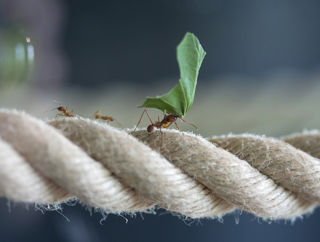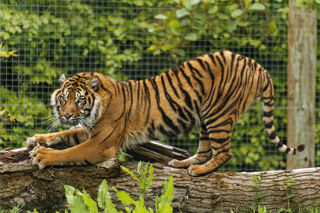
Leaf-Cutter Ant
There are 24 known species of leaf-cutter ant. A. octospinosus is the species kept at Twycross Zoo. They are pale brown with a thorny appearance and four pairs of spines on their backs.
This subspecies live in ant colonies that can contain 50,000 individuals, made up of mostly infertile female workers. The colony takes 18 months to mature and is separated into castes (which determine their jobs). There are usually four castes, minims (working inside the colony), minors and mediae (collecting the leaves) and majors (soldiers). The caste an ant belongs to is dependant on their body size.

Each colony is founded by the queen ant, a winged female that will have left her previous colony. She will mate in the air with several males, storing the semen for the rest of her life. She then sheds her wings and digs a burrow. The queen will keep herself sustained until the colony establishes itself by cultivating a small fungus garden and laying infertile eggs as food.

The leaf-cutter ants diet is unique. They do not eat leaves but cultivate them in a garden to grow a particular species of fungus. The mycelia (root-like structures) of this fungus are their diet. The ants also create multiple antibiotics to prevent the growth of unwanted fungus and will use these antibiotics in a similar way to humans to treat infections.
This abundant species is listed as Not Evaluated by IUCN. They have no known threats.
Key Facts:
Conservation Status: Not Evaluated
Distribution: Brazil, Mexico
Habitat: Coniferous & Broadleaf Forests, Tropical Forest
No. of young: 500 – 600

SUPPORT OUR ANIMALS
If you're looking for an alternative way to donate to Twycross Zoo, you can help support our animals and our zoo keepers by purchasing something from our Amazon Wishlist!
Updated regularly by our zoo keepers, the items on the list help to provide enrichment for our animals and keep their habitats well maintained.
Every donation helps us as a conservation charity.

